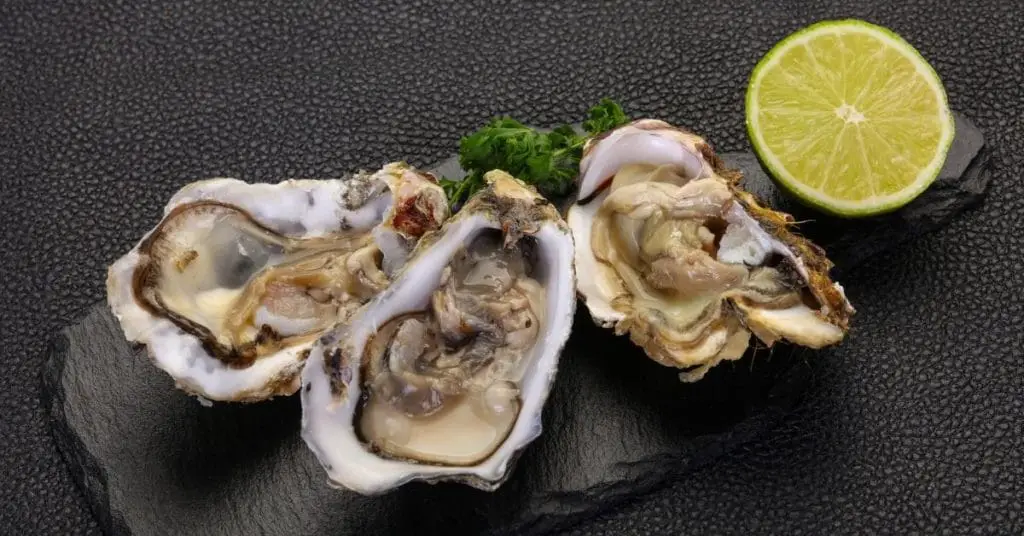In short, yes, you can freeze oysters to extend their shelf life, but be prepared for changes in texture, color, and flavor. While they’re not suitable for raw consumption after freezing, they work well in cooked dishes like stews, casseroles, soups, and chowders.
Oysters are a seafood delicacy, eaten cooked or raw. Winter months are the best for fresh oyster availability allowing bulk purchases from a fish market at great prices.
As with most fresh seafood, raw oysters don’t last long, and therefore, freezing is ideal to prolong their shelf life for later enjoyment.
You will need to keep a few important factors in mind when freezing oysters. Here is everything you need to know to successfully preserve oysters in the freezer.
Can Oysters Be Frozen?
Yes, you can store oysters in the freezer to give them a longer shelf life, however, freezing will change the way you prepare your oyster recipes. Freezing oysters will change the texture, color, and flavor of these mollusks.
Although fresh oysters should not have a strong fishy flavor or smell, this can change when frozen. During the freezing process, oysters lose some of their plumpness resulting in a softer texture. This makes them ideal for use in stews, casseroles, soups, and chowders.
You cannot eat them raw after freezing as the development of harmful bacteria will cause severe illness. Oysters should only be eaten raw when they are freshly harvested and still alive.
How To Freeze Fresh Oysters In The Shell
Step 1: Sort
Oysters should only be frozen live. Sort through the oysters checking that the oyster shells are tightly closed or that they close when lightly tapped. Oysters with open shells should be discarded. These are dead oysters and may cause food poisoning when eaten.
Step 2: Clean
Once you have sorted through and discarded the dead ones, wash and gently scrub the oyster shells in cold water. Washing the oysters before you freeze them, allows for easy preparation once thawed and preserves the texture better than washing them afterward.
Step 3: Pack
Lightly pat the shells dry and pack the closed oysters in a ziplock freezer bag. Press out the remaining air from the bag and seal.
Step 4: Label and Freeze
Label the bag with the date and freeze.
How To Freeze Shucked Oysters
Step 1: Sort
Sort through the oysters checking that the shell is tightly closed or that it closes when lightly tapped. Oysters with open shells should be discarded as they are no longer alive and may cause illness when eaten.
Step 2: Clean
Once you have sorted through the oysters and discarded the dead ones, shuck the oysters into a strainer. Make sure to save the oyster liquor, straining any sand, dirt, or pieces of broken shell.
The fresh oysters should not have a fishy smell and should have a plump and moist appearance. Rinse them lightly in cold water to remove any sand or shell.
Step 3: Pack
Place the oysters in resealable airtight freezer bags or containers and cover the oysters with the strained oyster liquor. Leave an inch of headspace open at the top of the bag or container for the liquid to expand on freezing. Press out any remaining air from the bag and seal.
Step 4: Label and Freeze
Label the bag or container with the date and freeze the oysters.
How To Thaw Frozen Oysters
Oysters are best cooked from frozen and do not need to be thawed. If you need to shuck oysters after freezing, they can be placed in the refrigerator to defrost overnight. Never let frozen oysters thaw at room temperature as harmful bacteria will develop quickly.
Types of Oysters
There are many different types of oysters, some of which are harvested for pearls specifically, others for their beautiful translucent shells, and true oysters are the ones commonly harvested for their great flavor.
Oyster meat can be eaten raw or cooked and is best consumed fresh. They can be eaten on the half shell, baked, smoked, stewed, fried, roasted, pickled, canned, or steamed. Oysters can also be used in a variety of drinks and are typically paired with alcoholic beverages.
A natural liquid called oyster liquor surrounds the plump oyster in its shell. This liquid keeps the oyster alive when out of the water.
Oyster liquor can be enjoyed with the oyster and should always be clear. Never eat raw oysters served without this liquid around them nor if the liquid is cloudy.
Oysters are prone to the growth of harmful bacteria and should, therefore, always be eaten freshly harvested or cooked.
FAQs
Conclusion
Freezing oysters is a great way to prevent food waste and to make good use of seasonal oyster deals. Although oysters will change texture on freezing, they are still great for use in stews, casseroles, and chowder.
If fresh oysters are what you are after, it’s best to head out to a seafood restaurant where you can eat the fresh goods straight away since frozen oysters cannot be eaten raw. But having the frozen delicacies on hand in your freezer is a great treat for a luxurious seafood meal at any time.
*Image by AndreySt/depositphotos









